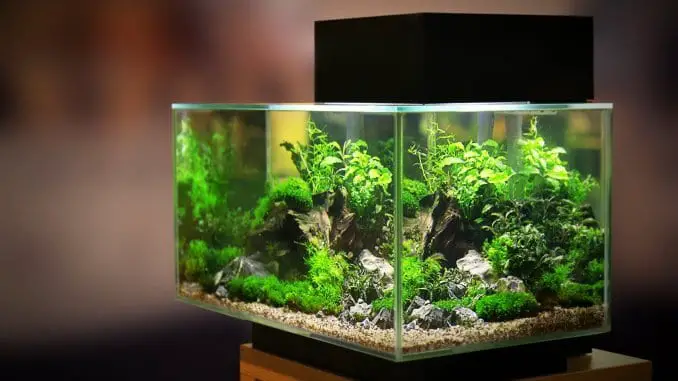
If you want an aquarium that can easily fit in your living room yet create a focal point at the same time, then look no further than a 30-gallon fish tank.
This size is just about perfect for the majority of fish keepers – it provides enough space for lots of beautiful fish and lets you gain lots of experience along the way.
Without taking up too much space it manages to become a wonderful home for the same fish you would see in larger professional tanks. You can keep colorful Cichlids along with many other great species (more on this later).
Keep on reading as we discuss stocking suggestions, equipment, design ideas, and much more…
Check this Article: Encyclopedia Of Freshwater Aquarium Fish eBook
What To Know About 30 Gallon Fish Tanks
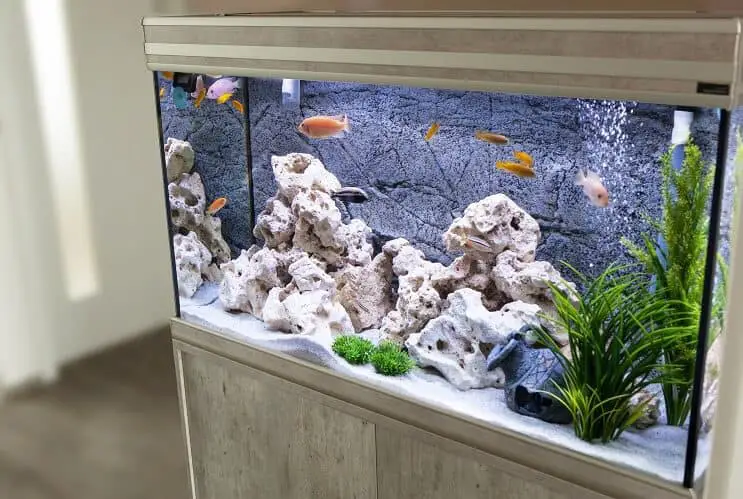
A 30-gallon fish tank is a great alternative to a large aquarium.
Aquariums of this volume allow for a great combination of species and plants. They can host many different fish and also different reptiles as well – it can even be used as a paludarium. As for entirely aquatic animals, fish, crabs, shrimps, and snails can all live there without fighting for territory.
Plus its size and dimensions are ideal for beginner aquarists moving on to bigger tanks.
With the right aquarium equipment, your involvement in looking after the tank will be minimal. Almost all well-known brands offer an extensive array of tools to help you keep the aquarium running.
There are many different builds to choose from, you may see some 30-gallon tanks that incorporate wooden parts in their assembly or others with an interesting metallic hood slider.
These aquariums are made to suit every consumer and many models have been made to do just that by appealing to every budget. Whether you wish to go for a cheaper one or spend a little more, you will be able to find a tank that suits you.
Apart from an ordinary 30-gallon tank, there are also different specialized versions that include breeding, high, and even wide tanks. The main difference is in the dimensions and the purpose of each individual tank.
30 Gallon Fish Tank Dimensions
A standard 30-gallon fish tank will usually measure 36¼″ x 12 5/8″ x 16 ¾″ (L x W x H).
The variations mentioned before would have either a different height or a different length, the width usually stays the same.
30 Gallon Aquarium Equipment
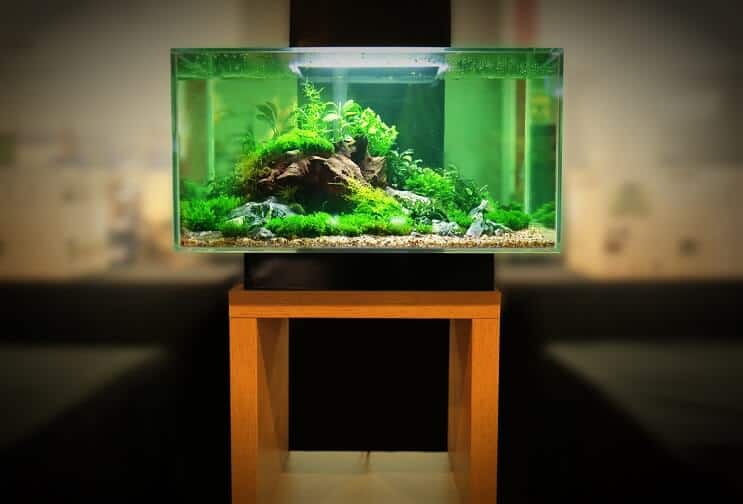
There is nothing more important than choosing the right equipment for your aquarium. These pieces of equipment provide sufficient nutrients, establish cycling and keep the temperature at the desired level – they are the foundation for all the life in your tank.
Without quality, well-functioning equipment your chances of having a flourishing aquarium are slim.
Heater
The water temperature in nature is regulated by a combination of factors including direct insolation, cooling, and mixing. In your aquarium, however, it will be entirely up to you to recreate this very efficient system.
This can be done using a tank heater.
A 30 gallon aquarium does not need an extremely powerful heater. A medium-powered one will work without any problems, however, there are some additional functions worth considering.
You can get an automatic or adjustable heater which is handy when keeping species that require a slightly different temperature regime.
Filter
In the wild water is constantly being mixed up by a variety of physical processes including winds and tides. In closed systems (such as fish tanks), filtration helps keep water aerated and filled with nutrients – this is extremely important for all aquatic animals.
Filters are a must-have for every aquarium – not only do they help to maintain a dynamic environment in the tank but they also redistribute nutrients across the water column.
You can use any kind of filter (external, internal, or substrate) as long as it can pump enough water. This characteristic is a very important one and you should keep it in mind when choosing a filter. It is usually represented by the volume of water pumped over a period of time (e.g. gallons per hour).
Read our guide here for more information.
Lights
Another important aspect for all aquatic animals is the light. Lighting not only dictates the way fish behave but can also affect their health in a variety of ways.
And it’s not only fish that rely on lighting but aquatic plants too. Just like terrestrial plants, aquatic plants also depend on sunlight for growth and development.
To recreate this at home you will need to use an aquarium lamp.
They don’t take up a lot of space but will make all the difference in your setup. The lamp also means you can place the aquarium further away from the window to avoid excessive algae growth, making maintenance much easier.
Other Equipment
Apart from the essential pieces of equipment mentioned above, there are still some others you can consider
For example, you can use an aquarium stand to give the aquarium increased stability and make the tank more presentable overall.
Depending on the type of animals you are keeping, you may consider getting either an aquarium hood or a simple lid. This will keep your fish inside the tank and will help you regulate the tank temperature.
You can also get yourself a gravel vacuum to make cleaning the substrate easier and more efficient. Another useful piece of equipment is an aquarium pump that helps mix up the water in the tank and enhances the performance of your filter.
30 Gallon Tank Setup Ideas
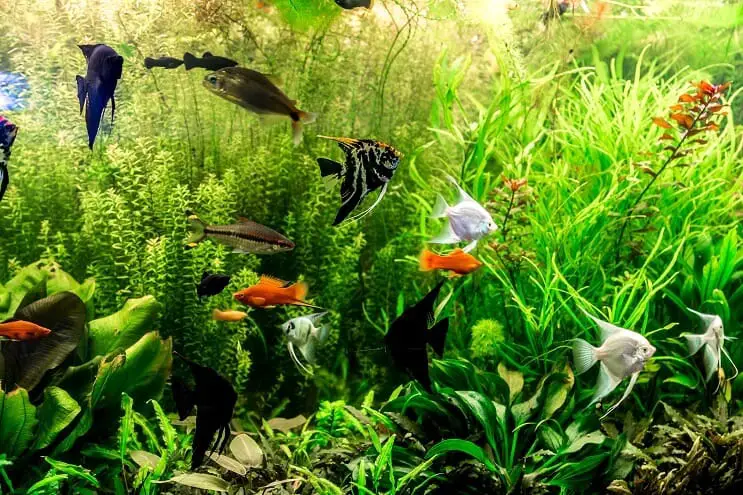
One of the best types of tanks you can go with is a community aquarium – this setup allows you to create a community of plants, pretty fish, and beautiful decorations.
For this size tank, you would need to pay attention to the compatibility of different species in the community in order to avoid any aggressive behavior. For that reason, fish in community tanks are often small and peaceful, although you can keep semi-aggressive fish as long as their tank mates have a similar temperament.
An example of a community tank includes six cherry barbs, one pearl gourami, and a bristlenose pleco.
Another good choice would be setting up a species-only tank with a couple of schooling fish or just a pair of large beautiful fish. With a species-only tank, you don’t need to be as worried about compatibility.
In a species-only tank, you can experiment with decorations, rocks, and driftwood by creating unique installations or recreating natural landscapes.
A great choice for a species-only tank is Scarlet Badis fish – they have fascinating personalities and will also bring some color to the tank.
Another great setup choice for a 30-gallon tank is a paludarium. This is half aquarium, half terrarium that combines both terrestrial and aquatic plants/animals.
In the paludarium the main focus would be on plants but you can arrange it in such a way that you would have almost a small lake with a terrestrial slope going up out of the water. You can either get an amphibian or make some more space for fish and enjoy the unique look of your tank that way.
Read this Article: Best 20 Gallon Long Aquariums (Stocking Ideas, Equipment and More)
What Fish Can You Keep in a 30 Gallon Tank?
A 30-gallon tank is a great choice when it comes to deciding which volume is the best for a living room tank (it’s not too bulky nor is it too small). This size gives you a lot of freedom when deciding which setup to use and what fish to get.
Some of the fish you may consider include:
- Cichlids (Dwarf, South African, and South American)
- Tetras
- Catfish species (Corys, Plecos, and Otos)
- Rainbowfish
- Guppies
- Gouramis
- Rasboras
- Mollies
- Angelfish
- Platies
Other non-fish inhabitants you can include are shrimps, crabs, and even snails. What is even better is that if you are feeling tired of fish you can focus completely on invertebrates. They are exciting pets that will become a refreshing addition to your tank.
You can keep fish alongside many beautiful plants and add different decorations into the mix.
How to Set up a Fish Tank
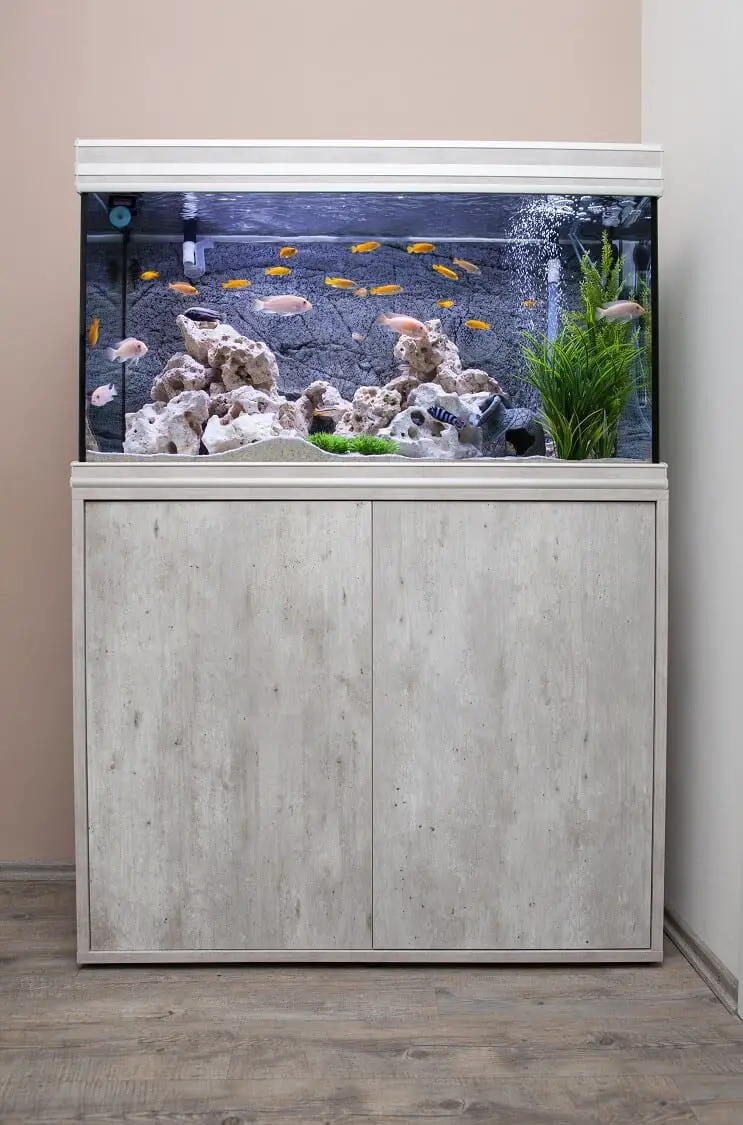
Setting up a 30 gallon tank is no harder than setting up any other tank. The main difference here is how you position decorations and design the interior.
Before actually doing anything, check your list and make sure that all the equipment is suitable to use in a 30-gallon tank and that it matches with the requirements of your fish too. Once that is out of the way, pick a good place for the tank (ideally somewhere away from the window).
The first thing you need to do is lay the substrate. Rinse it beforehand and ensure that there are no broken or sharp bits to prevent your fish from getting hurt.
If you have any plants that you need to attach to the substrate, place them first and just cover their base up with gravel or sand.
After the substrate and plants are in place, set up all the decorations, rocks, and driftwood.
Make sure to maintain a good ratio between free space and the amount of decorations.
When that is done go ahead and install the equipment, then you can start filling up the tank with water. You may also need to add some water chemicals (water purifiers, salt, etc.) depending on the type of setup you are creating.
After that, turn the equipment on and leave the tank to cycle for around 4 to 6 weeks. If you monitor the parameters, you will notice the ammonia and nitrite levels peaking and then falling to zero, once they are at zero the tank is safe to add fish.
Never take the fish out of the water they came in and drop them straight into the tank, this will stress them.
Instead, float the bag they came in, in the water for 10-15 minutes. Then add a cup of water every five minutes until the bag is full.
You can use a net to move the fish from the bag to the tank.
30 Gallon Tank Maintenance
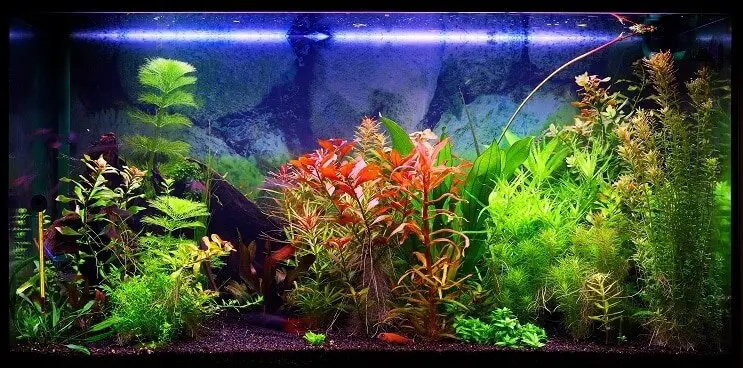
A 30-gallon aquarium is a relatively small amount of water that does not need lots of maintenance. It needs weekly cleaning, water renewals, and a quick check that all the equipment is in working order. This is all pretty standard and regardless of your previous experience, you should not have any trouble with it.
The most important thing to keep your tank in order is to have a solid cleaning routine.
Cleaning your tank regularly will not only prevent clogging and water pollution, but will also ensure that your equipment lasts longer.
You can use a double-sided magnetic sponge exactly for that. It is a great, compact, and convenient tool to take care of your aquarium.
Also make sure to frequently renew the water in the aquarium as it will significantly improve the quality of life and also stop it from becoming contaminated. To do this, change 20% of the water every week or two.
Equipment maintenance is also huge part of looking after your tank. Make sure you clean your filter weekly to prevent clogging and replace the media when necessary.
Buyer’s Guide
The 30-gallon tank has a pretty reasonable price range with cheaper models starting at $150-$200 and more expensive models costing up to $1,500.
You should not have any difficulty finding a tank of this size in store or online.
Compare prices of tanks on offer and decide which one best suits your needs. Once you found the one that you are comfortable with, make sure to check the assembly quality and that all sides are nicely sealed.
Also, look out for any scratches or other signs of physical damage on the walls and bottom.
Although we can’t disregard the convenience of online stores, actually being able to look at the tank is a huge advantage.
Summary
A 30-gallon tank is an intermediate tank that provides you with a little more space to experiment.
Have you considered aquascaping? This is a great opportunity for beginners to expand their knowledge and get new experiences.
This aquarium does not take up a lot of space in your room but leaves you with plenty of room for exploration, allowing you to experiment with different setups. Combined with beautiful fish and masterful design, a 30-gallon tank will prove to be a wonderful investment.
If you are looking for a new tank to buy, this might be just what you are looking for!
What is your favorite 30-gallon setup? Let us know in the comments section below…

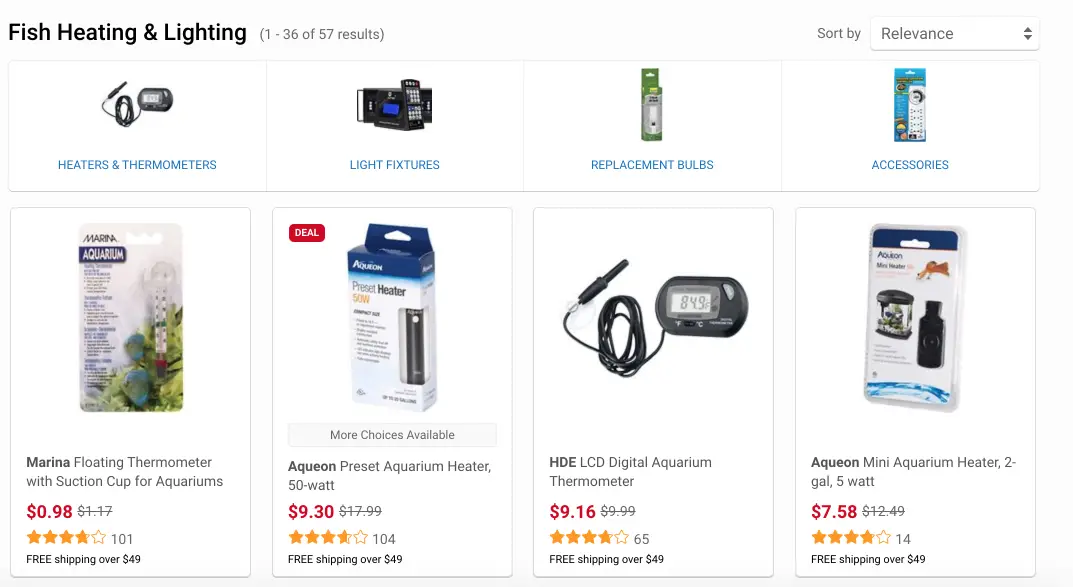
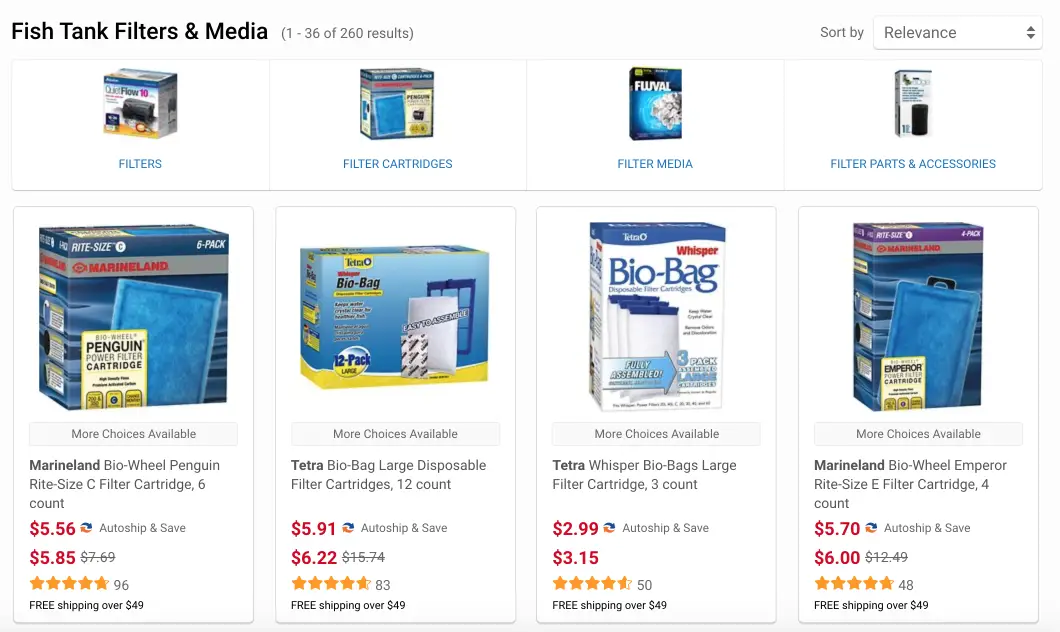
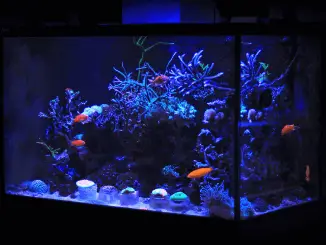
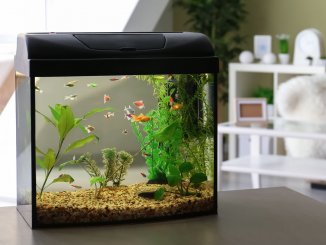
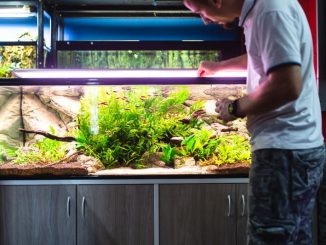
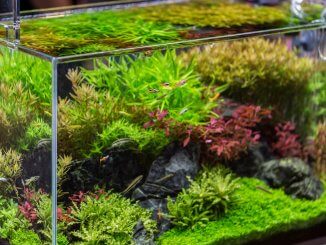
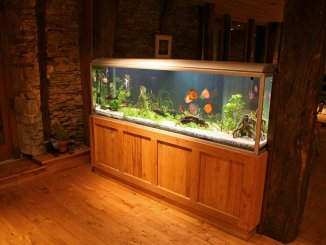
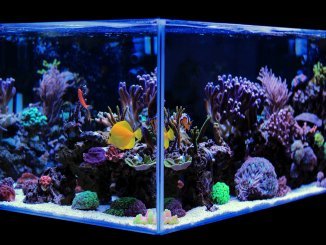
Be the first to comment